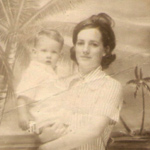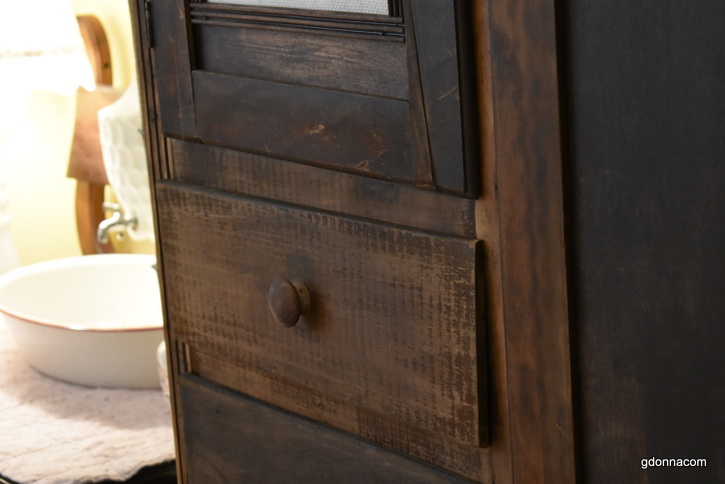
Charles and I have been on an adventure into the past for several years now. We have been going by memory of what we considered better times then going back further than what we had any memory of by history projects, much research and by doing.
We started many years ago going to the library and reading books and looking through microfilms. Then we dove in further and started reading journals and real diaries and invested in purchasing some of them. We have read old newspapers and trying to find what was happening in the home, the home front. We were most interested in the home, not as much about the wars or the great depression because we have read about these all along. We wanted to know what happened to average folks in the home during these times. How did they cope, how did they survive these times?
So we started trying to live it as we studied and then it started changing us. It made us realize how far we have gone from our roots and how much we have wasted and how we have turned a blind eye to debt and buying what is new as that is what we are made to believe is the right thing to do, keep up with the times. Aren't we suppose to stay modern? Isn't that what life is about? We realized how modern times led to reckless spending and wasting so others get rich.
Moving fast through time can be a mistake, we should not rush, we should take our time in everything we do and do it right. We should make better decisions and consider things before ever making a purchase or a change. We should not be reckless and consider what the outcome could be. Most important we should not change just because everyone else is changing.
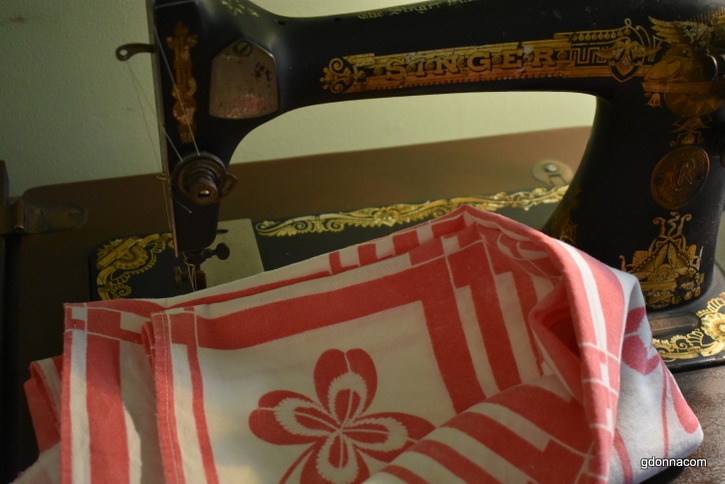
We both have learned so much more than we ever thought we would. Something I have found is that real goods from the past have more meaning. They feel better and make better sense. The weight and feel of things are different because of what they are made from and the quality.
Modern electricity changed so very much and with that we changed most everything that was natural.
This treadle sewing machine above is very old and sold in the 1920s. This machine is a good machine and when I took it in to be serviced the man said, this is a good machine. It is battered and long ago lost its good looks but the fact that it works well shows the quality of long ago. This machine sews without electricity as did many things from the past. It moves by the movements of my feet as I petal the foot pedal and as I sew on this machine I get into a rhythm and I love the sound of the petal and the clicking of the mechanisms as I move my feet and it costs nothing to run. If the power goes out I can still use this machine. No batteries, just the machine and I.
The treadle is simple and it does not even reverse, you stop, turn and go back the other way. It has no gadgets and it does what it needs to do and that is to sew cloth together. This leads to the old way of handwork such as finishing by hand, hand sewing, embroidery by hand, tatting, knitting, cut work or bobbin lace.
I still have my mothers 1958 electric singer as well and I feel as long as I have this I am keeping one foot in the present and one foot in the past because now I feel that 1958 was very modern after living more like the 1930s.

Through our journey and as you see on my blog we have gone through constant changes as we try to simplify. This picture was taken in a old farmhouse outside of our town and I use this picture to inspire me to let go and I have had to let go in stages as I am still doing.
I want to live like this old homestead in the simplicity of not needing utilities to run things in the home. I have more changes to make. A lot more changes.
I have mentioned before on my blog that we are in control of our utility bills, electric, water, gas, etc. If we want to live similar to this old homestead we need to fill vessels of water for daily use and not just go over to the sinks or tub and run the water.
Some people buy land and go to great lengths to go off grid and then find they need more so they start purchasing solar and find ways to get back what they were used to using. They find ways to have running water.
Before the grid, they knew how to live without it. Once we live with power and running water it is difficult to live without it. So why not do what is affordable such as just control what we use.
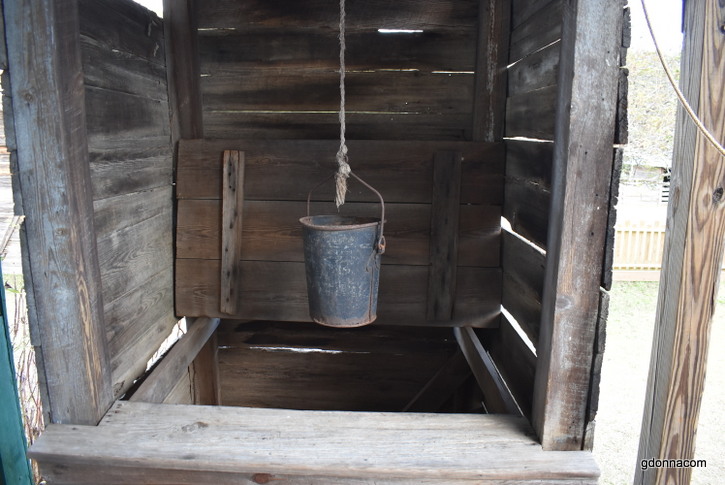
We can live in the city and still live similar as they did in this farmhouse by controlling the flow. They had a well and drew their water. We have a faucet but that does not mean we just turn it on and let it run. We can use it to fill our buckets and learn to live less wasteful. They did not let the water they used go down a sewer. They used the gray water for other purposes.
We do not have to run a hot water heater, that is a convenience. We can heat our water as we need it just as they did. A hot water heater heats the water when you use it and when you do not use it and all the while the meter is ticking.
Oh that is silly! Some would say. Why would you not use modern conveniences? Well some can afford to say this and there is no right or wrong here it is just a choice.
I say because it is expensive and the flow needs to be controlled. This is what feels right to . Am I good at it, not always but I try and I keep trying to improve. Do we live completely vintage? Not yet but we are striving to come close.
Many people are very comfortable with their modern life. They have good finances and do not need to live frugal. Some have good finances because they do live frugal.
Some like their recliners and big screen televisions. Some would rather be out in the garden. . We are all different and that is okay. Personally I long for the past and for the time that seemed more calm.
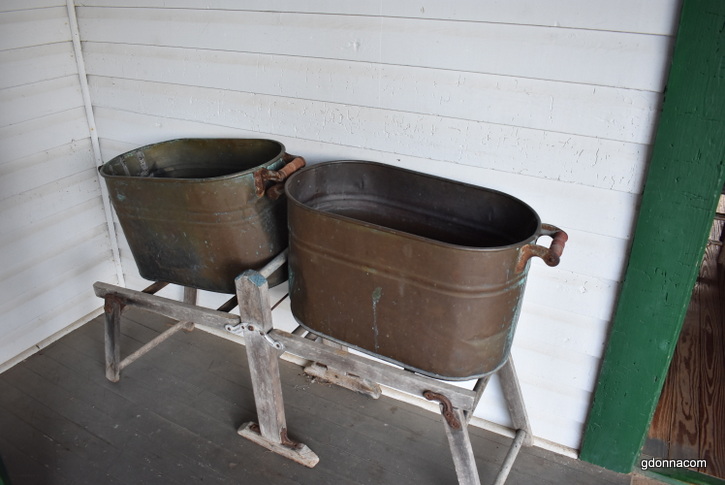
I say if you want to retire and cannot afford to do so find ways to be more frugal. If you are making it or not making it paycheck to paycheck there are many ways to cut expenses. It does help to live as they did in the past. The modern way to live is a money trap.
Live as though you do not have running water, live as though you do not have electricity. It is the law here we have to be connected to city water and electric but that does not mean we have to use it.
Since there is going to be a minimal use charge use the minimum. But what is sensible is use it wisely as though it is precious as it is. Use only what you need. Simple lighting and use heat and air when needed the most. Teach the family the way of the past. We do not have to take a shower every day. People used a washbowl to bathe and I have shown how to do this on my blog.
Use a cloth instead of a towel to dry off so there is not as much laundry.
In the past many of the houses were built different to homes today and had better ventilation to get the hot air out of the house. Some had windows that opened from the top, some rooms had windows close to the top of the ceiling on a wall that could be opened to help the hot air flow out and not get trapped in a room. I remember our classroom in school had windows at the top of the doors and some areas in the walls. There was no air conditioning during this time in school. So the problem today is we have built homes without proper ways to help keep cost down. The homes are built considering they will be cooled and heated with central heat and air. This makes us dependent on these things.
We also had a whole attic fan that pulled air up and out of the house, into the attic and out the attic vents. There are not a lot of houses left with these wonderful fans. As a child my mother would lift the windows and the fresh outside air would flow in the window and into the center hallway where the whole house fan would pull the air up and out the attic eves. Fresh air would circulate through the house. Many people did not live in these times and never knew of such things. Now people are strapped with high utility bills because of the way modern homes are built.
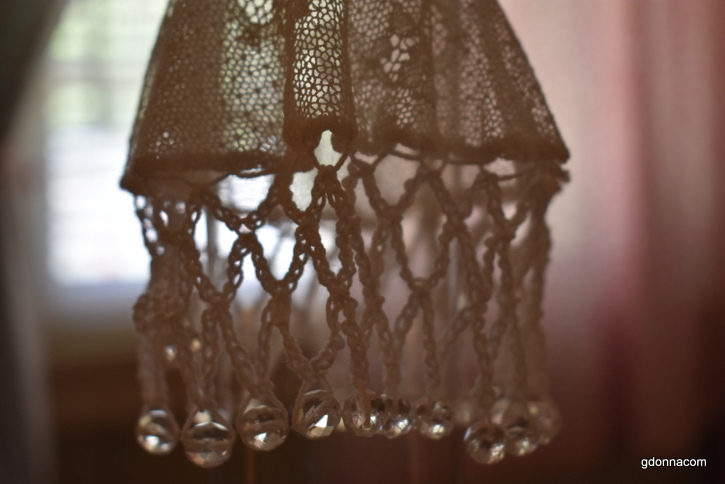
I have not been tatting or making lace or doing other hand work for a good while other than knitting because I have been busy moving. I have been moving to live like the past and that takes time.
We cannot live "in" the past and it is difficult to even live "like" the past because outside our doors is the now. But we can bring the past forward as long as we give up some of our modern mistakes.
Charles and I have enjoyed our journey of living like the past and will continue as we want to resemble and embrace the good parts of the past because we can.
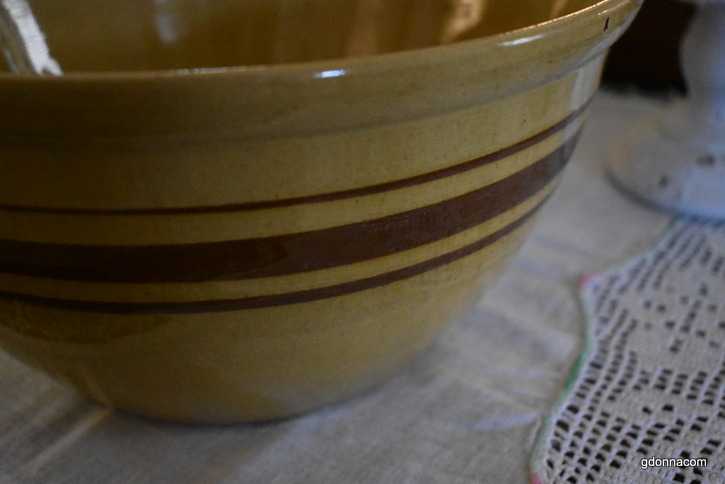
Not everything was good long ago, some things we thought were good were found to be toxic but that is still going on today with modern things and what is bad is there is so much of it as we live in the disposable time. It seems as if we would have learned by now.

As time changes we can fix things if we will. Most important that we pay attention, is what we have mostly decorative or useful? Do we have the tools and items that we need to help us be more sustainable and not need to spend unnecessary?

Charles and I have been trying to find items that will not need to be replaced and doing this in an affordable way by finding older pieces that no one wants anymore.
The cost of healthcare and medicine in our country has gotten to an all time high. We need to save every way we can and if we have items that are made to last then that means we do not have to spend money replacing items that should have been made well but were not.
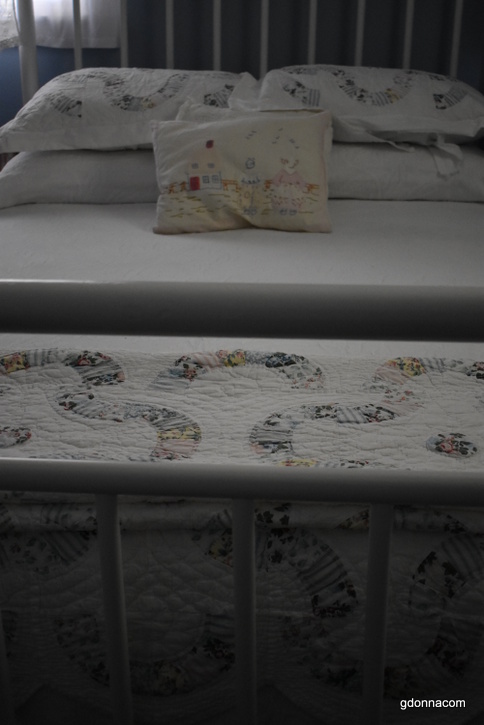
I have found to live a simple life in today's world to find goods and furnishings that will last and not have to be replaced such as this iron bed. You would be surprised at how many people do not want these things anymore and discard them. Charles and I have found many things at surplus stores where people discard the old pieces made of iron and wood.
Also we do not have to look vintage to live a simple life. I just prefer the vintage look.
I see so much on the internet. Some people are becoming minimalist and that can be good but to live a sustainable life we need tools and supplies. We don't want to get into a position that we have to go out and re-purchase items that we have discarded.
We also don't want to get rid of so much that we do not have a functional kitchen anymore so we have to go out to eat or cannot preserve food. There are a lot of tools needed in the kitchen, even in the past. To preserve food we need a pressure canner and water bath canner, jars and lids and rings and such as these things. Fermenting supplies, items to use to dehydrate food.
Minimalism is not the same as de-cluttering. Many homes just need some clutter removed and keep the things we need to run a house and keep up repairs. We all live different ways and we are all at different stages in life and we have different needs at different times.
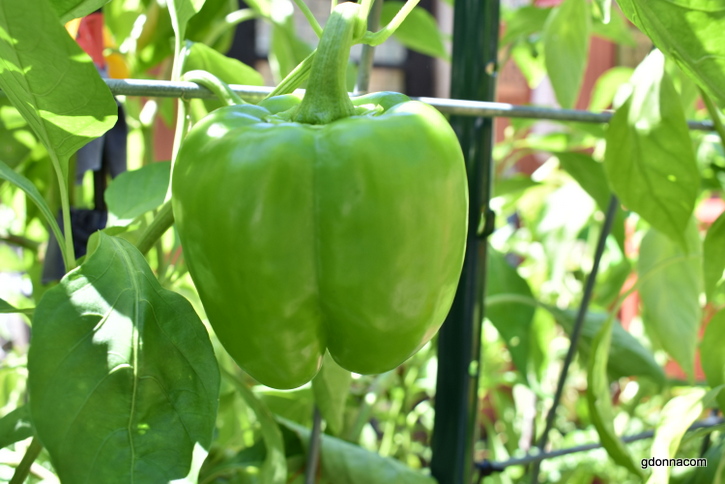
It would be sad to discard purposeful items only to need them later when they would be very expensive.
To live simple we use scraps, reuse, take those worn out items and re-purpose them. Any good fabric left on a shirt or blouse, pants or skirts it can be made into a quilt or a wrap or old cloths that are okay to be stained. It is good to remove buttons and zippers to be re-purposed. It is okay to keep these things to be more frugal.
Frugal is okay, it only means to be economical with ones money and resources. That is a good thing.
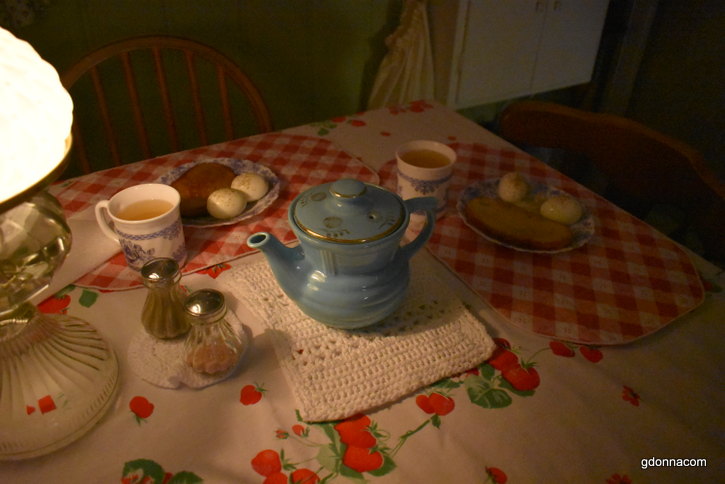
I am going to answer a email here.
Question, What was the solution to all the wash cloths and cleaning cloths during the week? With my family of 5 I feel like I have a ton of washcloths during the week hanging up to dry to be put in the hamper. I also have 3 little ones, so I have lots of messy kitchen cloths that I rinse and then wait to dry to put in a hamper, but still get smelly. What is the common sense back in the day solution when you have one laundry day?
Also was the style of dish towel and wash cloth different back in the day to make them easier to dry on the line? Julia
Great questions Julia.
Answer,
I had actually questioned this myself a few years ago. One day I realized I had developed a habit of tossing cloths to be washed on top of the washer and would spread them out. These were from the kitchen and also the bathroom. One day I realized that I did not have this many cloths in the past and had to ponder on what happened.
For me, in the past I would wash out my dish cloths after I used them and hang them on my handy kitchen hanger by the sink which I still have. I used the same two or three cloths over and over through the week. I did not have very many cloths and now I have too many cloths so I am guessing due to the number of cloths I had then and I have now I just started using more since I was washing anyway. But this needed to be corrected.
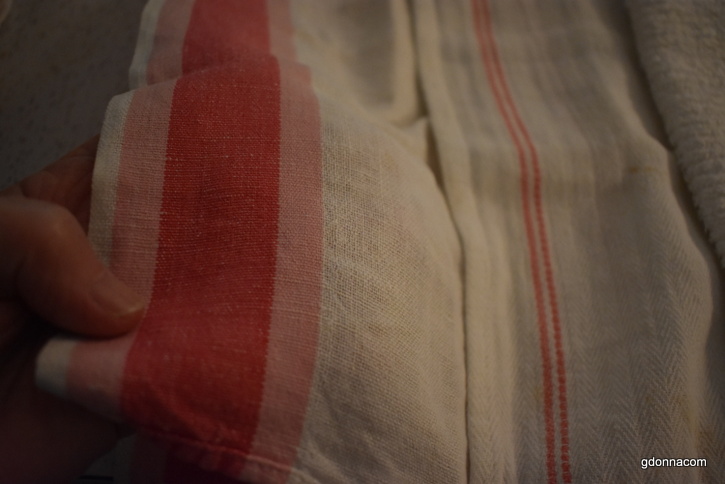
Vintage linen kitchen towel on left where my thumb is.
Dish towels were not thick terry cloths but cotton or linen towels. Baby diapers were also cotton flat shaped similar to a kitchen towel but larger. Also flour/seed sacks were used for dish towels and making dresses as well as pillow cases and other items.
Baby diapers were tossed in a diaper pail, not plastic in the past, and then in a soak. In the past baby diapers dried very quickly because of the single layer style. Diapers were folded to make the thickness if that makes sense. I have wondered how in the world these cloth baby diapers today ever get clean or dry. We did not have this type in the past and I would have never been able to afford disposable diapers if there were such a thing. But this is off topic.
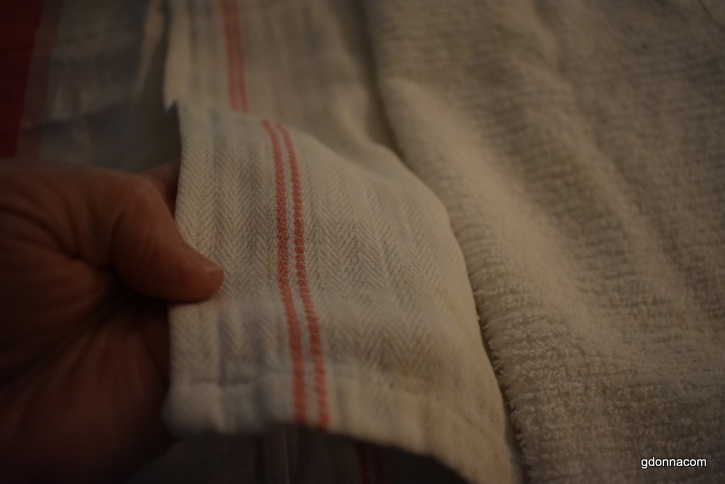
These are the cotton towels I use now which dry quickly and the terry cloth towels are the modern towels today that take longer to dry and I do not use these often. You can buy cotton bar cloths and drying towels on amazon that are not terry.
As far as the children, when my children were small I do not remember cloths being a problem, I have always had a dry line in the house or on the back porch to dry the cloths that have been hand washed and when the big wash day came those weekly cloths were washed on that day.
I have cloths and socks and items frequently hanging on the small clothesline on the back porch and our back porch is very very small.
We simply did not use that many cloths back then as we do now because we washed them out and used them over. Possibly each child could have their own color.
I wore an apron quite often and still do however my aprons now are full aprons and in the past I wore the aprons that tied around the waist and the apron wiped many faces, hands and whatever else.
When I was reading one of my diaries I realized even though they had the once a week washing they did hand wash certain items during the week and hung it to dry in the house or on the outside line close to the house most likely. I did this as well, especially when my children were in diapers because diapers could not wait for once a week washing.
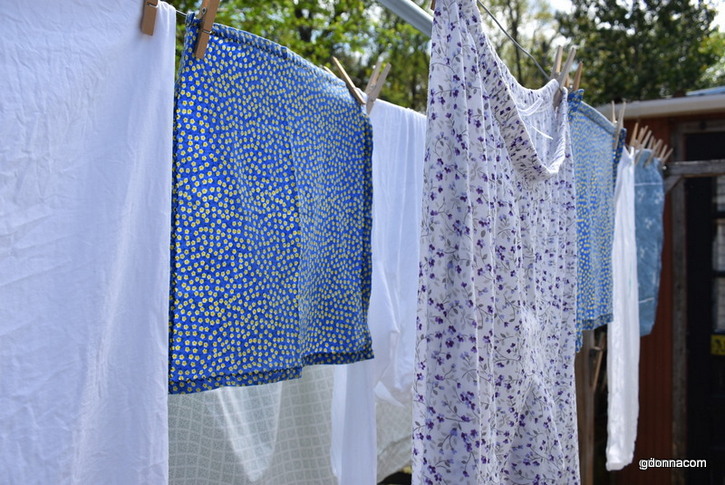
So I am asking for you older folks that read my blog your thoughts to help answer Julia's question and to help all of us on this matter. Tell us your opinion on this and how you coped with wet cloths and how many cloths you used in the past and what you do today. I just cannot remember having any issues as we do today. Please keep it simple and I will copy and paste your answers on a blog post. How many cloths and towels do you use in a day?
Younger folks, if you have a solution or would like to tell us what you do I would like to hear from you too and those of you that have to conserve water. I am sure there are many of us that would like to know what others are doing to remedy on not having so many cloths to wash.
It is my understanding that it is common in some countries that people do not use wash cloths for bathing.
Also, I have three yellow terry cloth wash cloths that are stained from potato peelings, tea and coffee and because I use them to wipe the counter and certain pots. I am always grabbing these to use for counter spills or wipes so I do not use paper towels. This has helped a lot on reducing the use of paper towels.
Remember, keep your answers as simple as you can so I can copy and paste, some of you may have the same problem as I did not in the past but then did in modern times.
So Julia, I have a feeling you will be getting some different opinions very soon as so will I.
Grandma Donna
